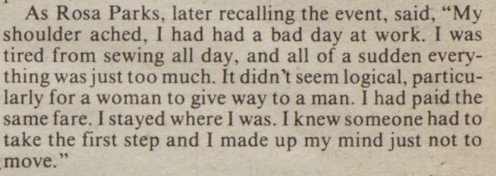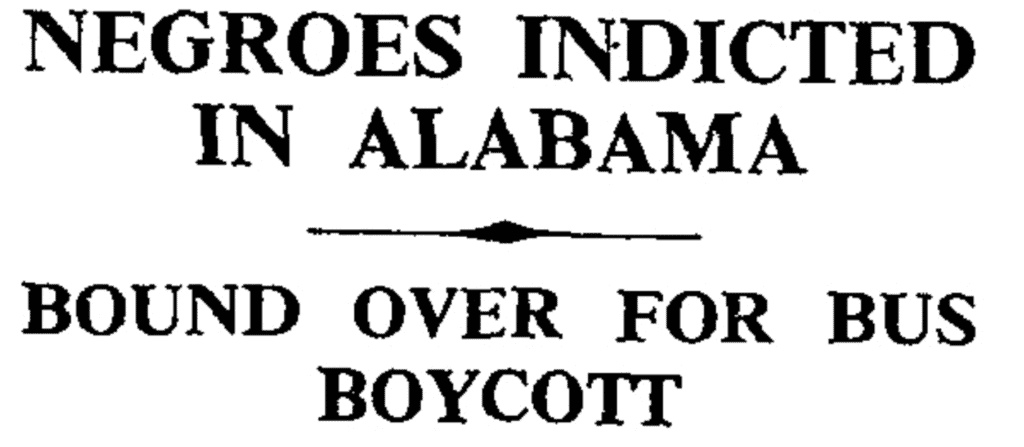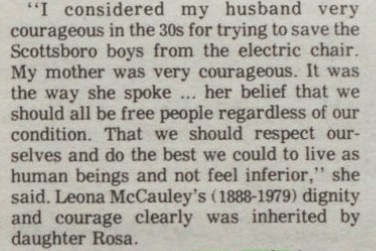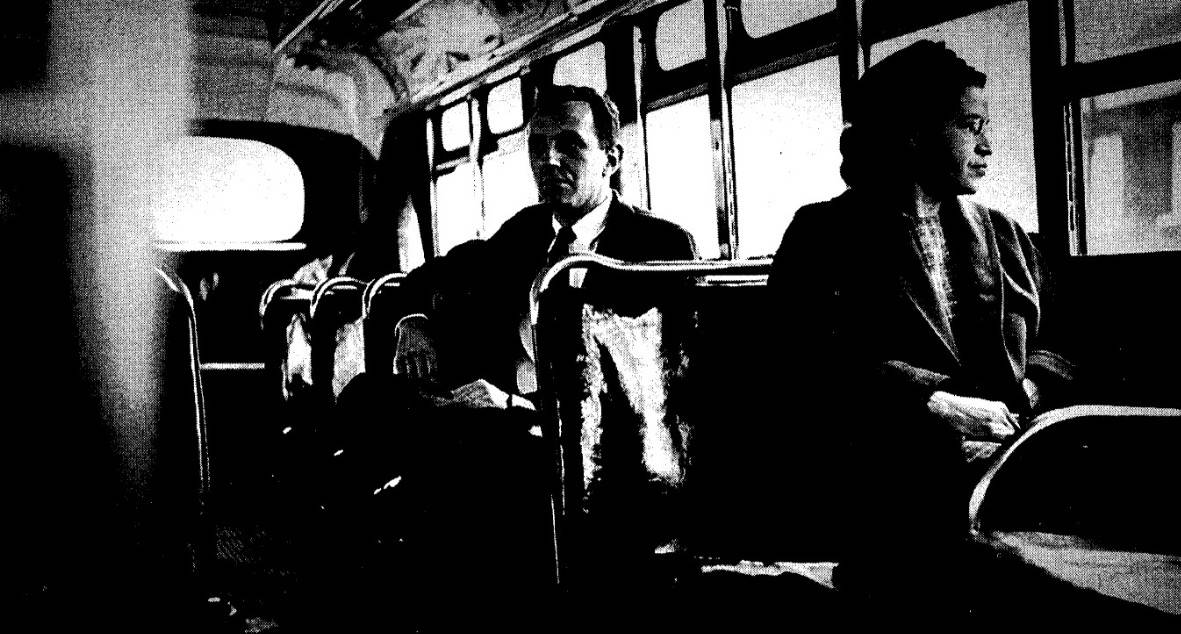| By Emily Priest, Gale Ambassador at the University of Portsmouth |
On December 1st, 64 years ago, one simple word sparked a civil rights movement we will never forget: “No”. So began one woman’s fight against oppression in America, and her name was Rosa Parks. A tired seamstress on her way home from work, Rosa unknowingly became “the mother of the civil rights movement” by refusing to give up her seat to a white man. Using Gale’s Historic Newspapers, and other digital archives, it is possible to travel back to this moment and, through the lens of primary sources, fully appreciate the bravery of her protest and the impact of the waves it sent out across America. On this important anniversary in human history, let’s take a moment to remember Rosa, celebrate her achievements and reflect on our past, in hope of a better future.

“Separate but Equal”
To understand the significance of Rosa’s actions, we must first try to understand the lives of black Americans in the 1950s and the severe discrimination many faced every day. An article from 1981, featured in Gale’s Archives of Sexuality and Gender, talks of the intense segregation at the time, explaining that bus drivers would openly call black passengers “niggers”, “black crows” and “black apes” who were only allowed to enter a bus from the back. Only whites could use the front entrance. In addition to this, a section of the bus would be reserved for only white passengers, whether they were there or not. If a black passenger sat in these seats, or even directly behind, they could be arrested and would face the risk of being attacked, and possibly even killed, by the KKK. At this time, the author writes, “lynching was quite popular and occasionally the white people would take a Negro man and put him to death”. With an understanding of the severity of this discrimination and intimidation, we can appreciate how significant it was when one lone woman, “a tired seamstress going home on the bus”, said “no”.

One Woman’s Quiet Fight
On December 1st, Rosa Parks boarded an Alabama state bus during rush hour. She bought her ticket, entered from the back and sat in her seat. After a short while, a white male approached Rosa and demanded her to leave so he could have the seat. Recalling the event in The Feminist Connection, Rosa explained, “I had paid the same fare. I stayed where I was. I knew someone had to take the first step and I made up my mind just not to move.” Her defiance, although justified, resulted in a $14 dollar fine (the equivalent to around $134 today) and, according to an article in the Times Digital Archive, she was convicted of “violating local segregation laws”. She was jailed for 14 days. Her appeal was rejected by Judge Eugene Carter who said “he would uphold city and State segregation laws”. But little did he know that Rosa Parks had already sparked the flames of rebellion across America.

After Rosa’s protest, countless black Americans rallied to show their support and, four days later, a bus boycott begun that “lasted 381 days”. This boycott, involving black ministers such as Martin Luther King, received attention from the authorities who sent armed police to “break up” congregations or protests. One news article from 1956, from the Daily Mail Historical Archive, said police “rounded up 115 negros, 20 of them church ministers” and treated them “like criminals”. They were fingerprinted, photographed and “released on $300 bail” (around $2,838 today). A reporter for the Times elaborated on the incident, claiming “40 negros have been arrested” on charges of “illegal action”. However, despite the backlash, the boycott was eventually successful and led to the reversal of the Supreme Court’s 1896 decision to rule black men and women “separate but equal” to whites. This was one of the first legal victories of the civil rights movement of this era and was ignited by one woman.
![Lucas, Christopher. "Police swoop on bus boycott Negroes." Daily Mail, 23 Feb. 1956, p. [1]. Daily Mail Historical Archive, 1896-2004,](https://review.gale.com/wp-content/uploads/2019/11/Gale-Blog-Image-4.jpg)
However, Rosa Parks’ contribution to civil rights did not stop there. Alongside her seamstress work, Parks also worked as a youth advisor and helped to register black voters who would otherwise be marginalised by mainstream politics. Joined by her husband, she also founded the Rosa and Raymond Park Institute for Self Development for kids aged 11 to 16. In an interview with New Directions for Women, Rosa explained that “tomorrow’s leaders are the youth” and it was her goal, through her institute, to educate and motivate young African Americans to combat discrimination and rise to the challenge presented by prejudice. Four years after her arrest, Rosa received the Congressional Gold Medal from President Clinton – the highest honour congress can bestow. Yet despite all her achievements, Parks remained humble. In the article for New Directions for Women mentioned above, Rosa disagreed with the claims that she was courageous. “I considered my husband very courageous,” she said, “for trying to save the Scottsboro boys from the electric chair. My mother was very courageous. It was the way she spoke…her belief that we should all be free people”.

But Rosa did not consider herself to be courageous. Why? “I just did,” she said, “what I had to do”.

A Woman We Can Learn From
Rosa Parks passed away on the 24th October 2005, aged 92, and became the first woman in US history to have been given the honour of lying in state. Many have since reflected on her life, from presidents to historians, yet in a Times article of 2005, Ted Kennedy commemorates Parks’ achievements simply and eloquently: “her quiet fight for equality sounded the bell of freedom for millions.” Parks never set out that morning to be a hero. She went to work as she usually did, but something was different that day. As she says herself in an article in the Times Digital Archive, “people always say I didn’t give up my seat because I was tired, but that isn’t true. No, the only tired I was, was tired of giving in.” With one simple gesture, history was set on a new course. There is a lot we can celebrate and learn from that.

Rosa Parks lived her life with equality in mind and what she did that day, 64 years ago, proves that change is possible and that everyone, no matter how tired or reserved, can be a hero. We have come a long way since “separate but equal” openly governed society in much of the US, but if my research with Gale Primary Sources has taught me anything, it’s that there is still work to be done and we can only succeed with empathy and quiet courage.
Cover image citation: Reid, Tim. “America pays its respects to the mother of civil rights movement.” Times, 26 Oct. 2005, p. 47. The Times Digital Archive, https://link.gale.com/apps/doc/IF0502790590/GDCS?u=webdemo&sid=GDCS&xid=dad23752

